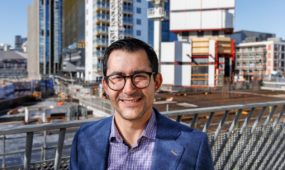A new stable sunscreen made from natural products - fish slime and algae
Health & Medical
RESEARCHERS have developed a new UV blocking material out of naturally occurring molecules found in algae and fish slime that can be used to make more effective sunscreen, bandages and contact lenses.

Sign up to receive notifications about new stories in this category.
Thank you for subscribing to story notifications.
Organisms like algae and cyanobacteria have evolved to synthesise their own UV screening compounds, such as mycosporine-like amino acids (MAAs).
MAAs are commonly found in the creatures that eat algae and cyanobacteria as well – tropical fish like those found on the Great Barrier Reef accrue the material in their slime and eyes to protect themselves from harmful UV radiation.
“Mycosporines are present a little bit everywhere, in many types of organisms,” says Professor Vincent Bulone, co-author of the research paper and Director of the ARC Centre of Excellence in Plant Cell Walls at the University of Adelaide.
“We have attached these small UV absorbing molecules in a non-reversible manner to a polymer called chitosan, that you can extract from the shells of shrimp or crabs.”
The result is an all-natural UVA and UVB screening material. Thanks to the versatility of chitosan, it can be used in a cream for topical application, a transparent film for use in materials like bandages, or coated on objects like textiles and outdoor furniture to protect them from UV damage.
Current sunscreen formulas use a combination of materials in order to screen both UVA and UVB radiation, including some that can have a negative effect on health in the long-term, such as titanium dioxide.
“It outperforms some of the compounds that are already used on the market in terms of the UV absorption capacity. The good thing is that it's completely natural. We've also tested them on cell cultures and know they are not toxic,” Professor Bulone says.
“We know, under laboratory conditions, the MAAs have no harmful effects. So they can be used for wound healing dressings for instance. You don't need to change that dressing as often and it facilitates the healing of the skin.”
The compound is also highly stable, even under high temperatures.
While chitosan is already widely used for many applications and easily extracted from crustacean waste products such as prawn shells, MAAs are more difficult to produce.
“Extracting it from algae would be a very expensive process, but it is possible to produce them by engineering bacteria. This has been since the early 90s. It's not a cheap process, but it can be done.”
Professor Vincent Bulone was recently installed as Director of the ARC Centre of Excellence in Plant Cell Walls at the University of Adelaide in South Australia.
“I've only started recently in South Australia. This work was done in my lab in Sweden. I still split my time, 70% in Adelaide and 30% in Sweden.”
Published in ACS Applied Materials & Interfaces, the research was undertaken with colleagues at Sweden's Royal Institute of Technology. It also involved close collaboration with partners in Spain.
Professor Bulone is actively developing new collaborations within Australia and internationally to develop new concepts leading to increased crop production and quality for nutrition as well as protection of crops against devastating fungal pathogens. These developments rely on his long-standing expertise in the biochemistry of carbohydrates from plant and fungal cell walls.
Jump to next article



